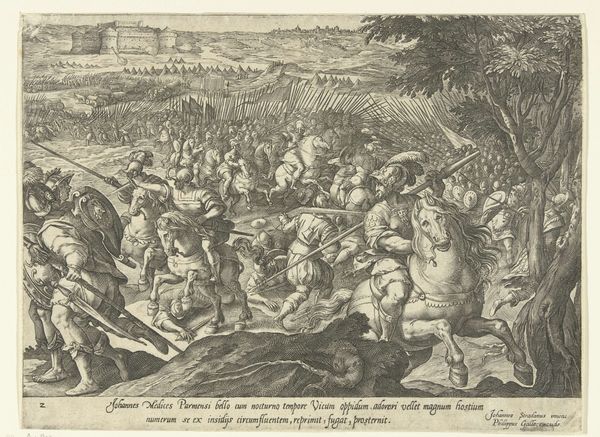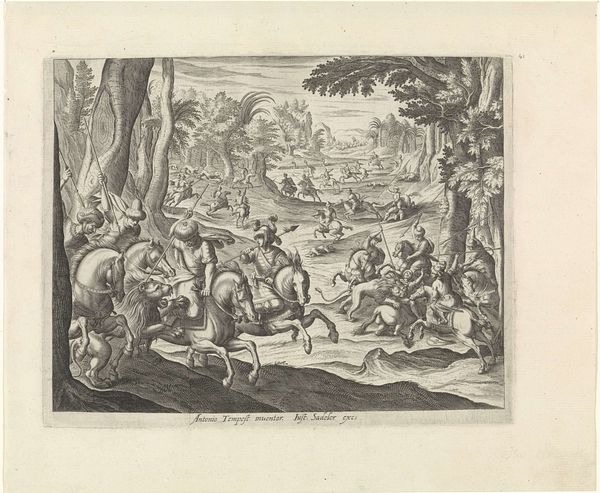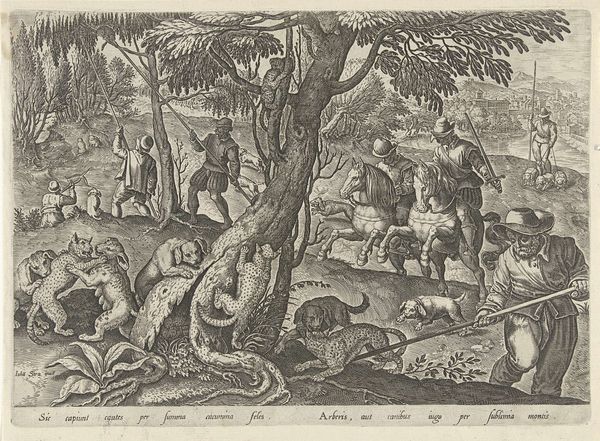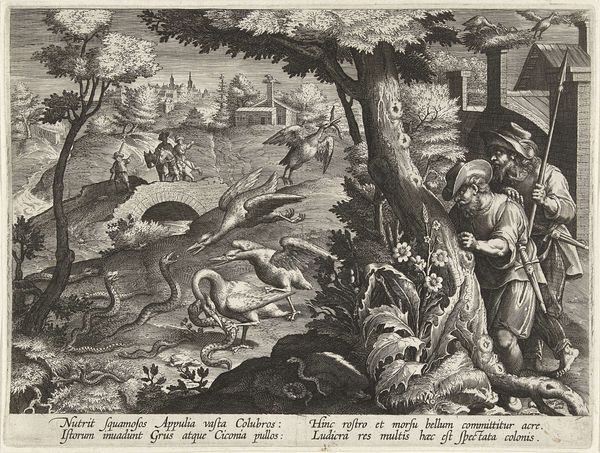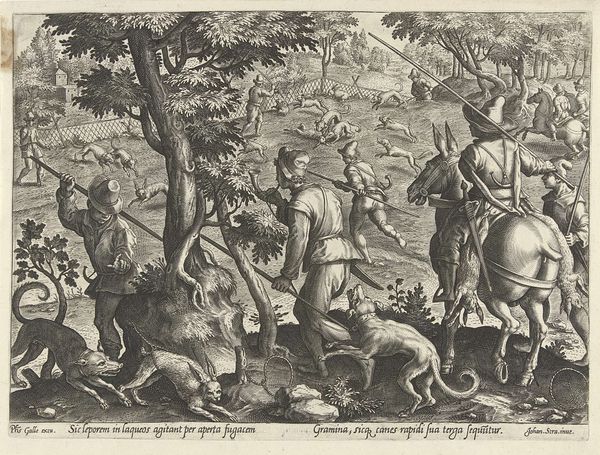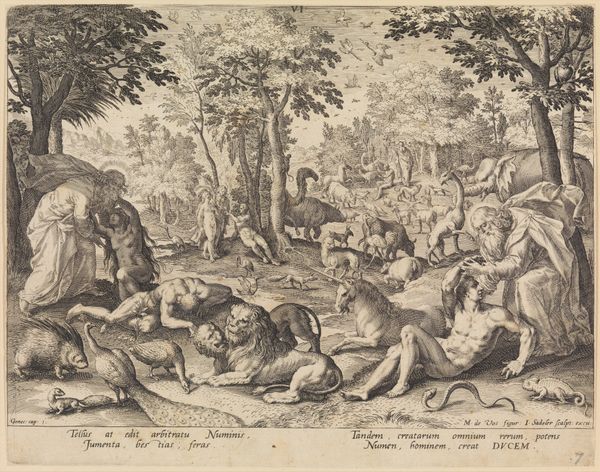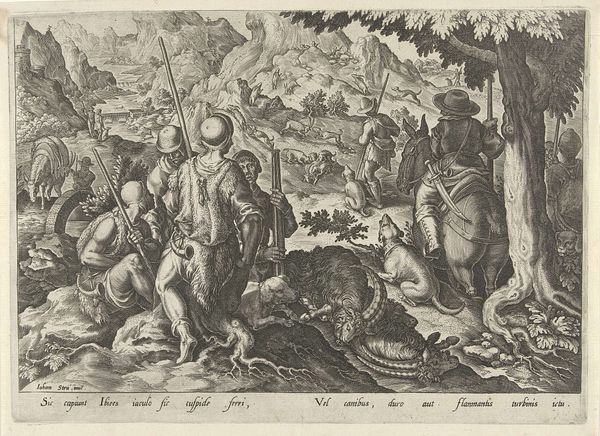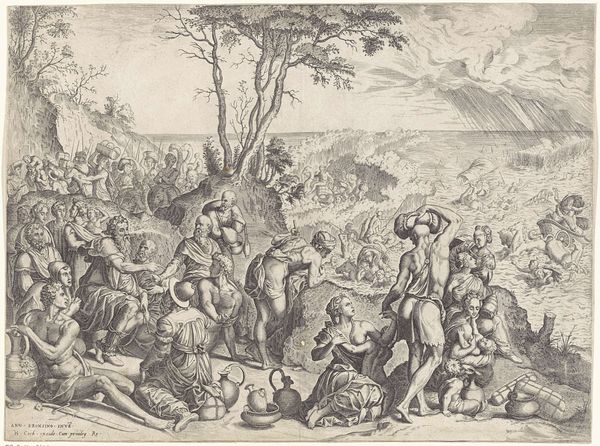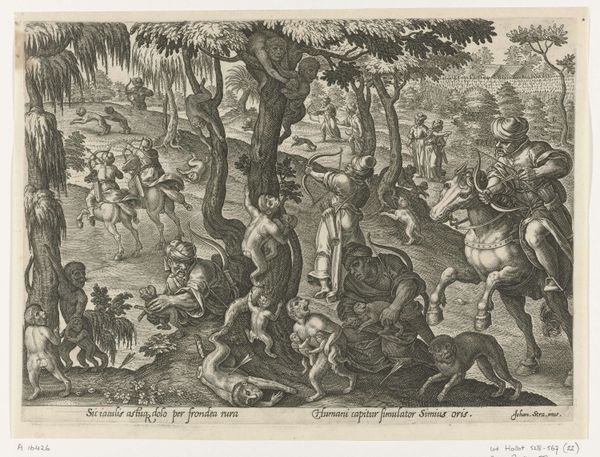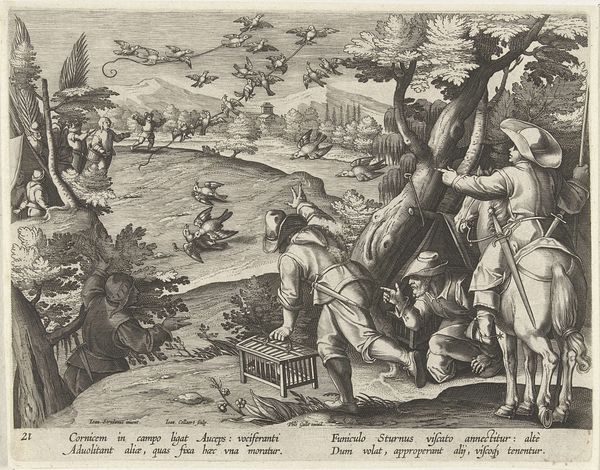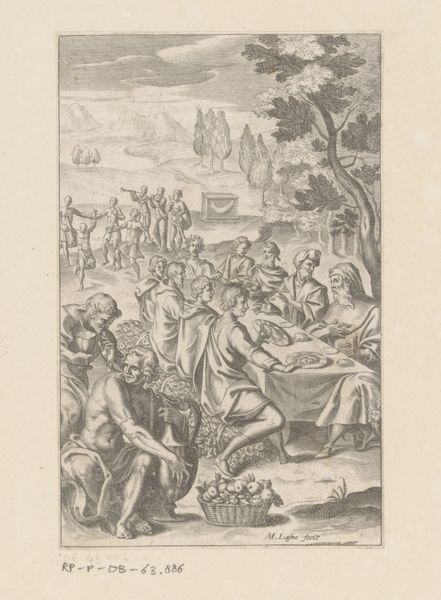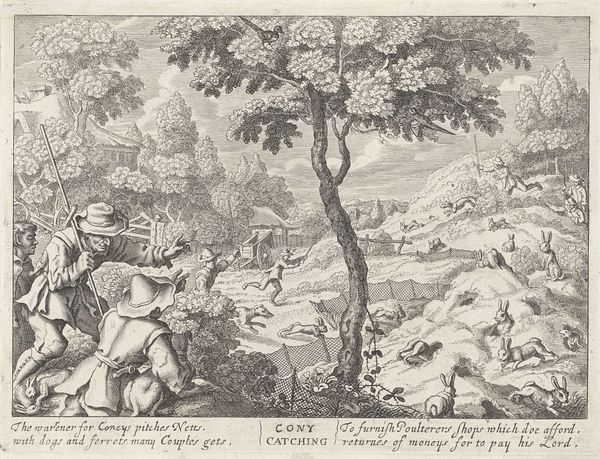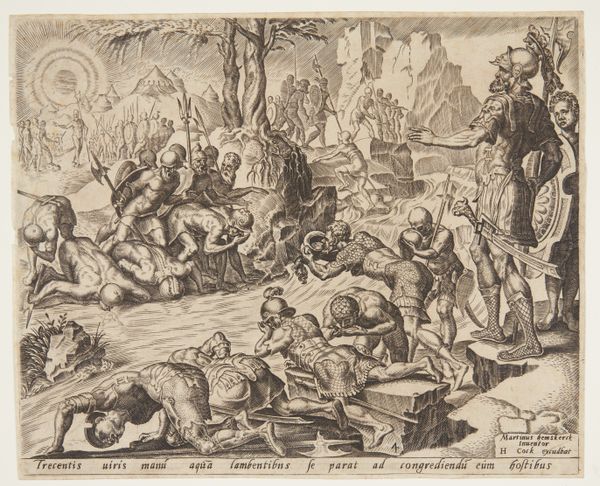
print, engraving
#
pen drawing
# print
#
pen illustration
#
pen sketch
#
old engraving style
#
landscape
#
genre-painting
#
history-painting
#
northern-renaissance
#
engraving
Dimensions: width 294 mm, height 216 mm
Copyright: Rijks Museum: Open Domain
Curator: Here we have "Drijfjacht op Zwijnen," or "Boar Hunt," an engraving by Philips Galle, created in 1578. It resides here at the Rijksmuseum. Editor: It's incredibly dynamic, chaotic even. The density of the lines really emphasizes the frenzy of the hunt. I’m immediately drawn to the interplay of fear and aggression emanating from both the hunters and the hunted. Curator: Note how Galle uses the engraving medium to his advantage. The sharp, clean lines create a high contrast, enhancing the sense of immediacy. Structurally, the eye is led from the foreground—dominated by the boar and hunting dogs—into the background, where a wooden enclosure traps other boars. Editor: Yes, the enclosure immediately struck me. It’s such a brutal image of human dominion over the natural world. We see these figures, often presumed to be aristocratic men based on the history, engaged in this act of violence as a spectacle, asserting power through the subjugation of wildlife. What commentary is Galle offering, through this depiction? Curator: Galle was part of a larger printmaking industry in Antwerp at the time. Consider the composition and technique more closely. The linear perspective draws us in, yes, but it’s slightly flattened. The focus seems less on pure realism and more on creating a dramatic, engaging image for a specific audience. The dogs almost mirror the wild pigs, expressing the true danger of this hunting “sport.” Editor: That’s precisely my point. The so-called sport masks a blatant power dynamic. Look at how the bodies are rendered. There is little detail between these bodies - they seem lumped and intertwined, which seems less in line with a celebratory hunt, and more in line with something altogether brutal. Curator: From a formalist perspective, the print operates as an elaborate construction of lines, shapes, and tonal values that serve its artistic end. Editor: And that artistic end, I argue, should also be viewed as a reflection of—or, perhaps, a critique of—the prevailing social attitudes of the time regarding class, violence, and human-animal relationships. This is where meaning resides in its complete form, where this image’s legacy is held. Curator: Very good, considering both viewpoints, the print gains new clarity of vision, making visible the history, art history, and critical thinking that have shaped it. Editor: Yes, together we uncover so many layers of both visibility and violence, past and present. Thank you for unpacking "Boar Hunt" from our perspective.
Comments
No comments
Be the first to comment and join the conversation on the ultimate creative platform.
